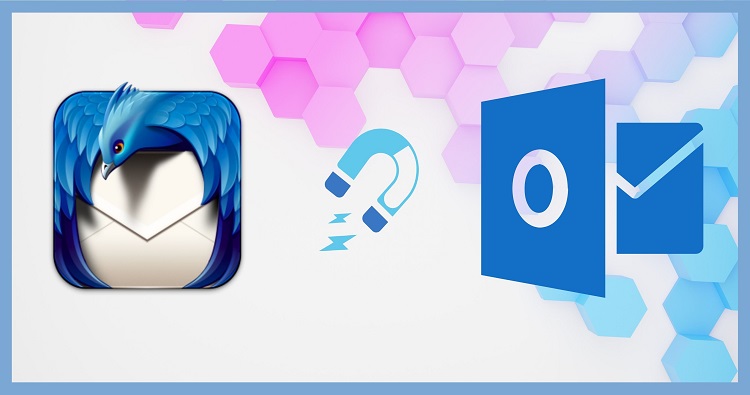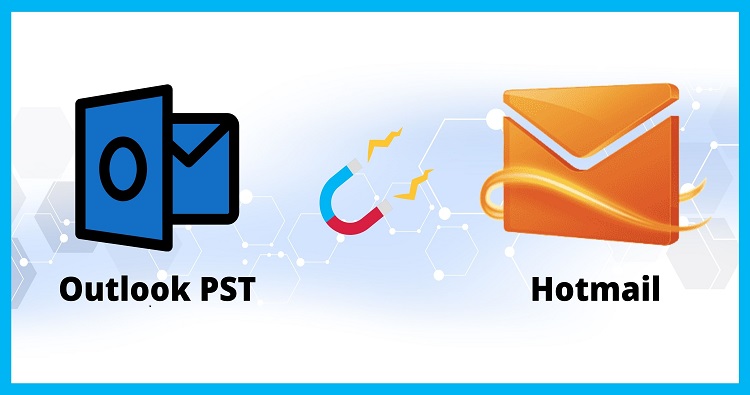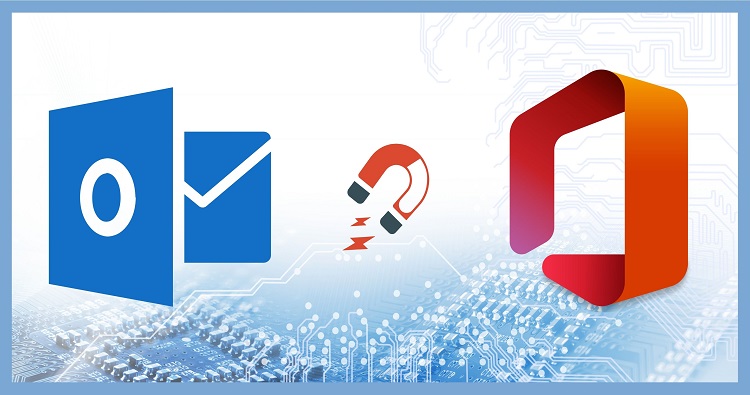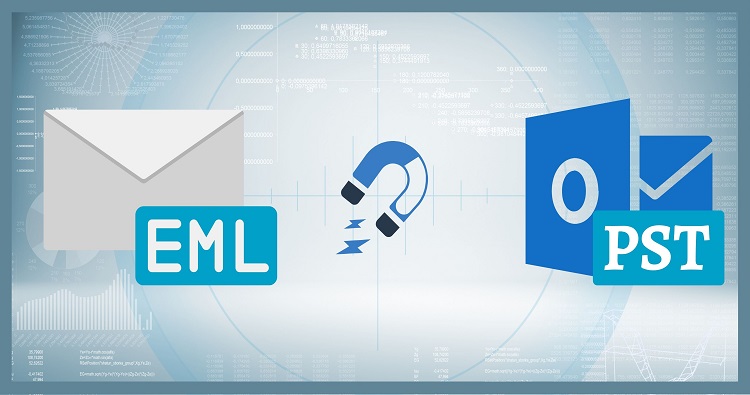Gmail is an emailing service offered by Google to manage complete email communication, individuals and small-scale businesses use it. However, due to the rising popularity and efficiency of Outlook 365, many are now looking to migrate to it. If we talk about Outlook 365 it comes within the Microsoft 365 subscription plan and is much more suitable to meet the needs of large-scale enterprises. Multiple users are now looking to migrate Gmail to Outlook 365 in order to meet their requirements.
But many of them face issues while on the way to the migration. So, don’t worry; we will guide you with the proper technique to safely migrate the emails from your Gmail account to Outlook 365.
Methods to migrate email from Gmail Account into Outlook 365
Looking up for a reliable method that you can employ to migrate Gmail to Outlook 365? Here, we will present different ways, including the freeways (manual method), and highlight the third-party software to solve the aforementioned purpose.
So as we have clarified a solution that can take you to transfer Gmail emails into Outlook Web completely. Now it’s time to start explaining the first method; kindly pay attention to the complete procedure to safely migrate your data.
To add Gmail to Outlook 365, users need to follow the below-mentioned process.
- Configuration of Gmail with Outlook Taking out Gmail data into PST file
- Import PST file into Outlook
Migration Phase1: Configure your Gmail Account in Outlook
- Firstly, open Outlook, and from the top, kindly click on File.
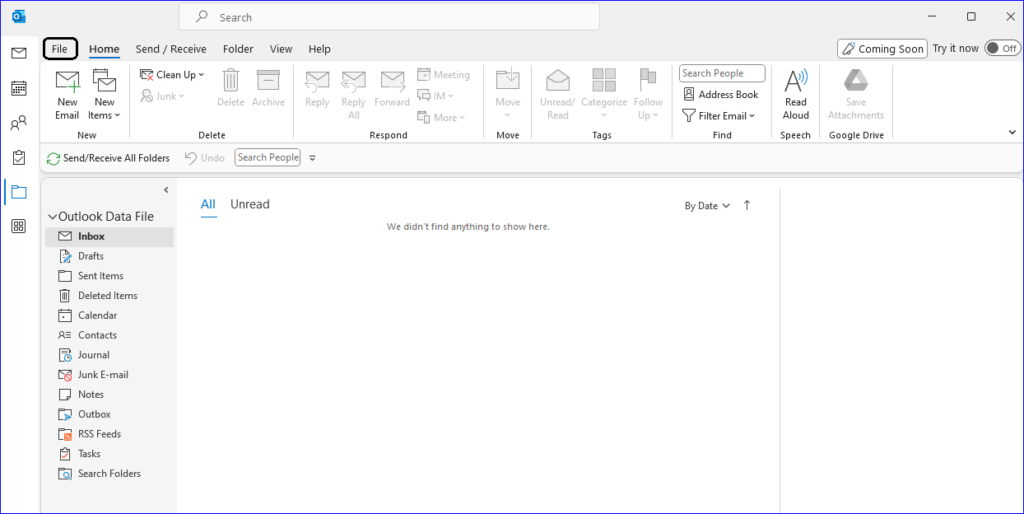
- Subsequently, click on the Add Account Option
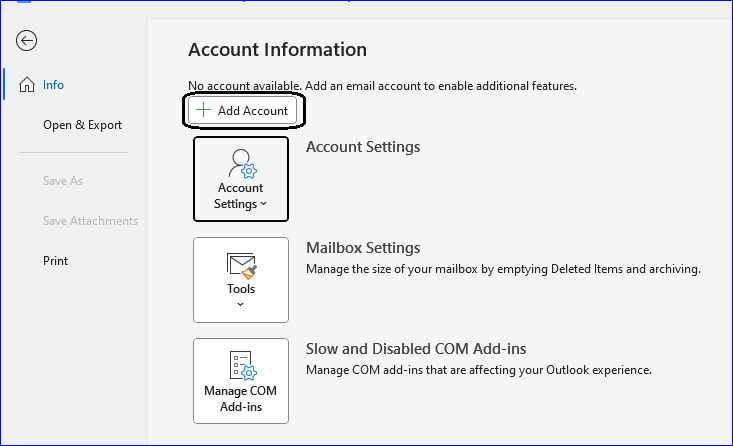
- Choose whether you need to setup manually or not. Later on, press Connect button.
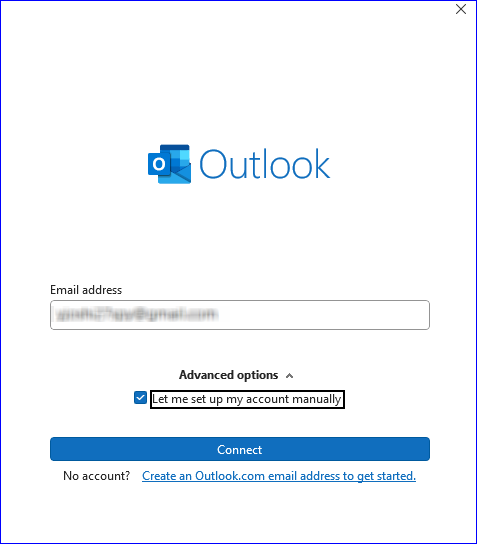
- Now, users will require adding the required details to accomplish the configuration of Gmail with Outlook. After mentioning details, make sure to click on Finish.
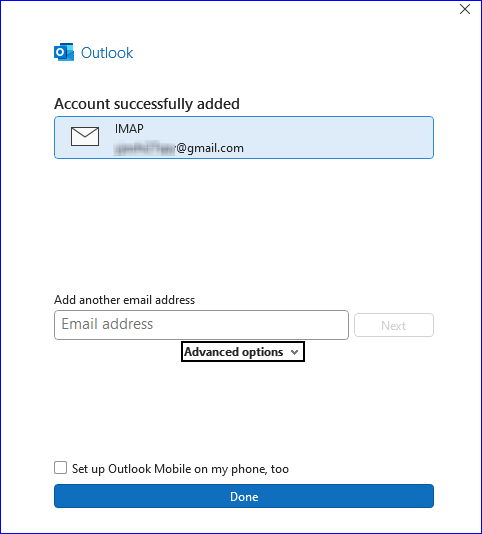
Migration Phase 2: Export Added Mailboxes into the PST file
In this migration phase, users will be required to export the added Gmail mailbox into a PST file. A detailed process has been showcased below:
- Kindly open Outlook and once again click on the File tab. Now, the user needs to look for Open & Export and, after that, choose Import& Export.
- Here, make sure to select the Export to a file option and then hit on Next.
- In the Export to a file wizard, click on the Outlook data file option and press the Next button.
- Now users will be required to pick out the Gmail account to which they look to export the data. Once done, click on Next.
- Choose where you need to store the output PST file with the help of Browse, then click Finish.
Afterward, your Gmail data will be saved into the PST file, which you need to import back into Outlook. After this, the task to migrate Gmail to Outlook 365 will get completed. However, kindly follow the listed procedure to complete the last migration phase.
Migration Phase 3: Import Exported PST file into Outlook
Note: Make sure that your Outlook account is configured with Office 365. Otherwise, this migration method will not work.
- Open Microsoft Outlook and select the file from its menu section.
- Now from the list of showing several options, select Open & Export and then Import/Export.
- Go ahead after selecting Import from another program or file, and click on the next button.
- Here, proceed with selecting the Outlook data file option and the next button.
- Kindly add on the PST file from which you need to import the data, and hit on Next.
- You can select the required items, and from the drop-down menu, kindly choose the Office 365 account option.
Once done with the above-requested method to migrate Gmail to Outlook 365, click on the Finish button to start moving the data from the Gmail mailbox into the web version of Outlook. However, the method we have shared with you is not a perfect solution as it has multiple downsides attached. The user cannot process multiple Gmail accounts at once; a bit lengthier process, and many more.
Prominent Solution to Quickly Migrate Gmail into Outlook 365
If you are looking to migrate Gmail to Outlook 365 safely and without any restriction, then you can directly go with the professional solution. The reason behind it becuase the manual method fails to deliver the result quickly, creating space for third-party software. Shoviv Google Workspace to Microsoft 365 Migration tool is one of them that can deliver better results while consuming less time.
This software has an intuitive user interface, making it easier to use for everyone. Users can migrate Gmail to Outlook 365 by following a few simpler steps. In addition, this software allows adding multiple mailboxes and choosing only the required to migrate using its data filter options. One can also schedule the migration in many different time frames.
Transfer Gmail emails to Outlook 365 via Third-Part Tool
We will now bring the step-by-step procedure to add Gmail to Outlook 365 with the help of the above-listed software.
- Kindly install the software and then open it. After connecting with Gmail and Office 365, kindly click create migration job.
- Make sure to enter the name of the migration job and then select the source and the target project. Click Next to move on.
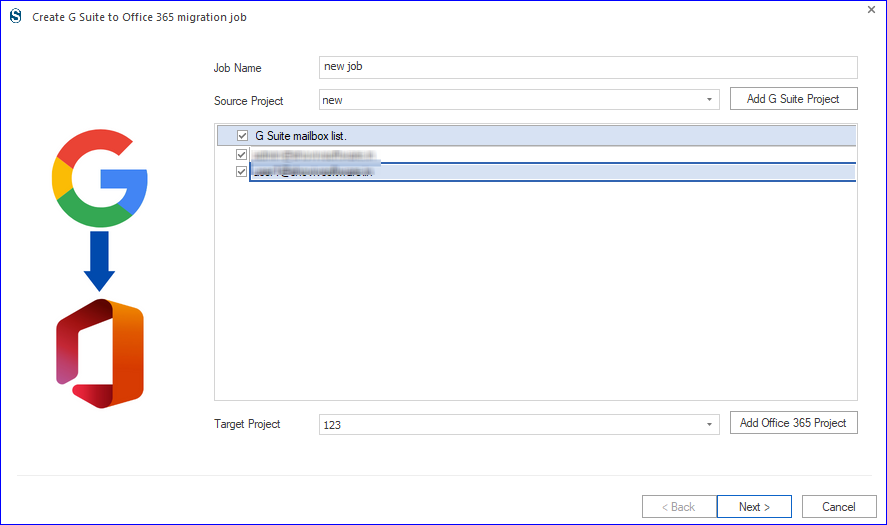
- Here, users can map the mailboxes from the source with the target. Later on, press the Next button.
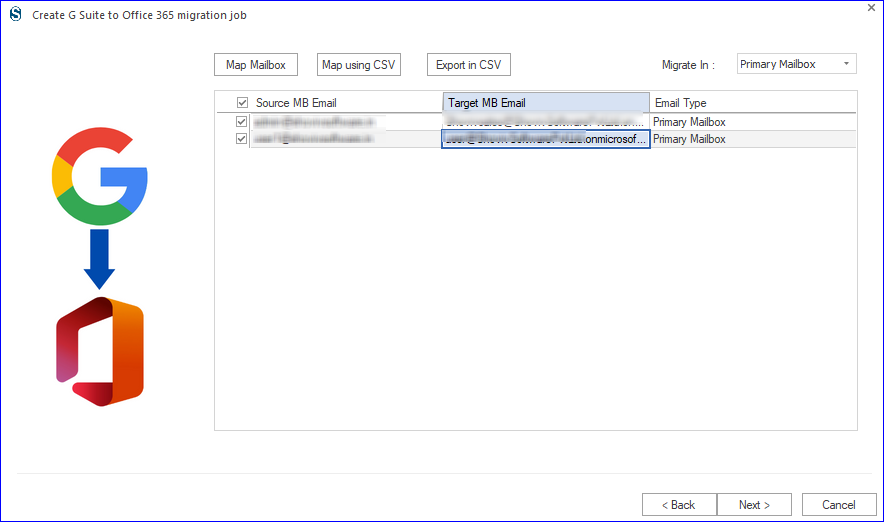
- Apply the required data filter criteria. If you must migrate the particular time frame emails, apply the include/exclude data filter. Kindly choose the remaining filter option to migrate only the required folders from your Gmail account. Click on Next to continue.
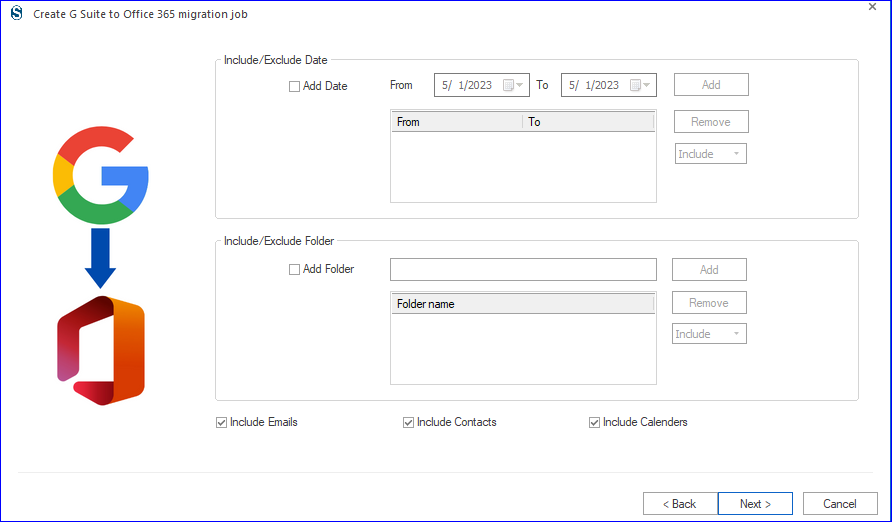
- Here, users can change the migration threat count settings. The software allows making changes in the mailbox and the item thread count. Also, users can select any one option under the Job run action. Once you choose the required migration scheduling option, kindly click Next.
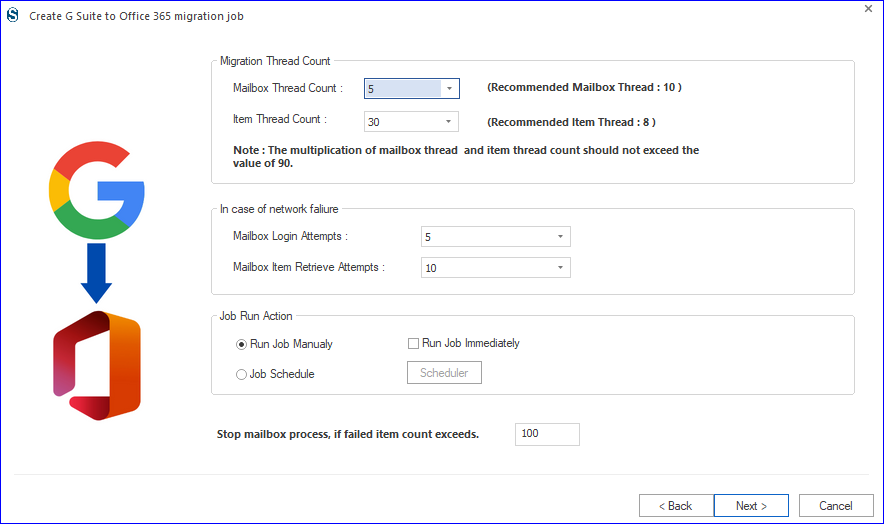
- Users can now review the applied setting while configuring the process to migrate Gmail to Outlook 365; once done, click the finish button.
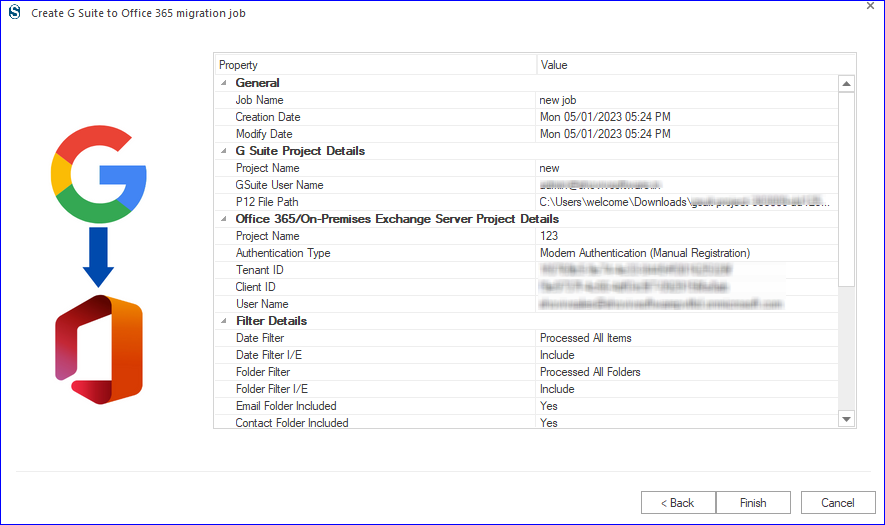
- The software will now show the live process logs, which provide insights to users of the migration process. After completing the process, users can also download the migration report in an HTML file.
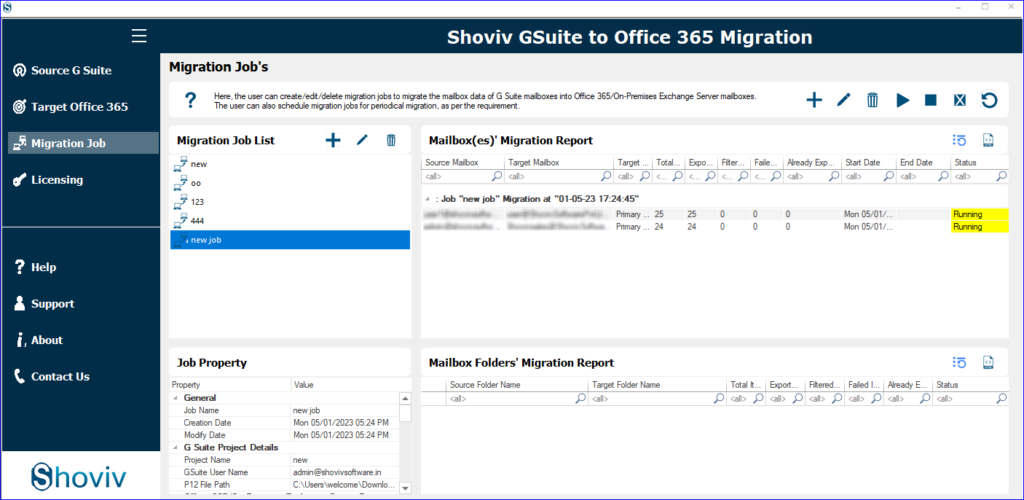
Final Remarks
We have checked the possible process to migrate Gmail to Outlook 365 with the complete data. Now it depends on the user to go either way for making the migration. However, if you face any issues while utilizing the manual method, you can straightaway go with the third-party software. Also, users can check out the efficiency of the software by analyzing its free trial version.
Frequently Asked Questions:
Q. What is the process for migrating Gmail to Outlook 365?
The process for migrating Gmail to Outlook 365 involves setting up an Outlook 365 account, importing Gmail data to Outlook using the Outlook Import Wizard, and configuring email forwarding from Gmail to Outlook.
Q. Can I transfer all my emails and contacts from Gmail to Outlook 365?
Yes, you can transfer all your emails and contacts from Gmail to Outlook 365 using the Outlook Import Wizard.
Q. What are the benefits of switching from Gmail to Outlook 365?
Benefits of switching from Gmail to Outlook 365 include better integration with Microsoft Office, advanced security features, and more storage capacity.
Q. Is there a way to migrate Gmail filters and labels to Outlook 365?
Yes, you can migrate Gmail filters and labels to Outlook 365 using the Outlook Import Wizard.
Q. How long does it take to migrate from Gmail to Outlook 365?
A. The time it takes to migrate from Gmail to Outlook 365 depends on the amount of data you have to transfer. It can range from a few minutes to several hours.
Q. Will migrating to Outlook 365 affect my Gmail account or data in any way?
A. Migrating to Outlook 365 will not affect your Gmail account or data in any way.
Q. Can I migrate multiple Gmail accounts to a single Outlook 365 account?
A. Yes, you can migrate multiple Gmail accounts to a single Outlook 365 account using the Outlook Import Wizard.
Q. What are the system requirements for using Outlook 365?
A. The system requirements for using Outlook 365 include a computer with a modern web browser and internet access.
Q. Is there a limit to the amount of data I can transfer from Gmail to Outlook 365?
A. There is no limit to the amount of data you can transfer from Gmail to Outlook 365, but large amounts of data may take longer to transfer.
Q. Can I migrate my Gmail calendar to Outlook 365?
A. Yes, you can migrate your Gmail calendar to Outlook 365 using the Outlook Import Wizard.
Q. How do I ensure that my emails are synced between Gmail and Outlook 365 during the migration process?
A. To ensure that your emails are synced between Gmail and Outlook 365 during the migration process, you can set up email forwarding from Gmail to Outlook.
Q. Can I access my Gmail emails after I’ve migrated to Outlook 365?
A. Yes, you can still access your Gmail emails after you’ve migrated to Outlook 365 by logging into your Gmail account.
Q. How do I set up my Outlook 365 account after migrating from Gmail?
A. To set up your Outlook 365 account after migrating from Gmail, you will need to download and install the Outlook app on your device and enter your account details.
Q. Will my Gmail folders and subfolders be preserved after migrating to Outlook 365?
A. Yes, your Gmail folders and subfolders will be preserved after migrating to Outlook 365 using the Migration tool.
Q. Can I migrate Gmail drafts and sent emails to Outlook 365?
A. Yes, you can migrate Gmail drafts and sent emails to Outlook 365 using the Outlook Import Wizard.
Q. Are there any third-party tools that can help with the Gmail to Outlook 365 migration process?
A. Yes, there are third-party tools available that can help with the Gmail to Outlook 365 migration process, such as Shoviv IMAP Migration and G Suite Migration tool.
Q. How do I troubleshoot any issues that may arise during the Gmail to Outlook 365 migration process?
A. To troubleshoot any issues that may arise during the Gmail to Outlook 365 migration process, you can refer to Microsoft’s support documentation or seek assistance from a tech support professional.

